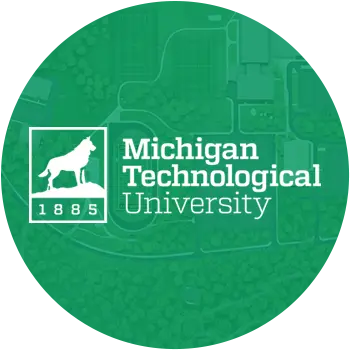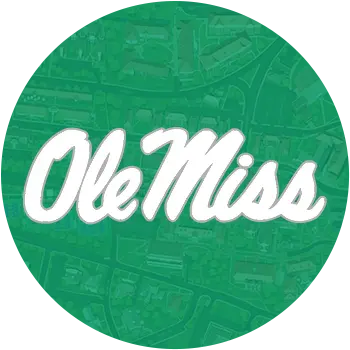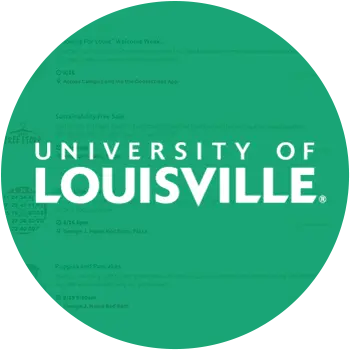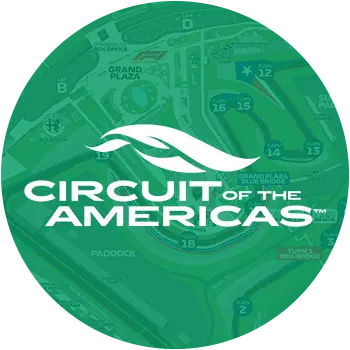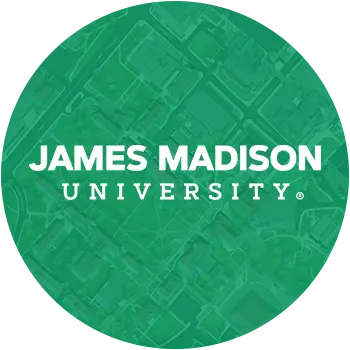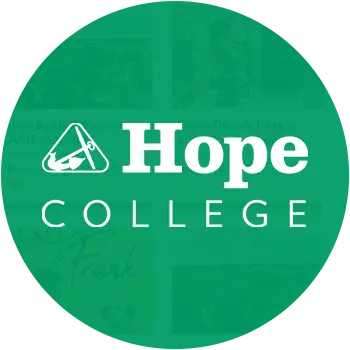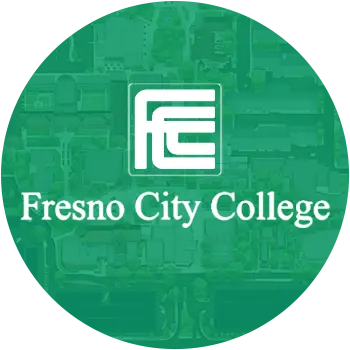Integrating Multicultural Marketing into Your Strategy
In this episode of Higher Ed Demand Gen, Christian Ponce underscores the importance of integrating multicultural marketing into the overall marketing strategy. Rather than treating it as a separate entity, he suggests, it’s essential to weave multicultural initiatives into the broader marketing plan. This can be achieved by preparing inclusive and culturally resonant materials, conducting internal assessments, and ensuring resources are available to support multicultural communities.
The Rise of Cultural Intelligence in Marketing
Christian Ponce emphasizes the growing significance of cultural intelligence in marketing. With the Hispanic demographic in the U.S. projected to grow to one in three Americans by 2060, the need for culturally intelligent marketing strategies is more important than ever. Understanding different value systems and ensuring effective communication is crucial for marketers looking to connect authentically with diverse groups. This not only aligns with diversity, equity, and inclusion efforts but also taps into the substantial Hispanic purchasing power, estimated at $2 trillion.
Practical Approaches to Effective Multicultural Marketing
Highlighting practical strategies, Ponce suggests organizations with a significant Hispanic presence should consider bilingual social media posts, leveraging native language speakers for cultural accuracy. He advocates for diverse and authentic marketing materials that reflect the actual demographics of an organization, which helps set realistic expectations and fosters a sense of belonging. He provides a successful example of using English videos with Spanish captions to engage Spanish-speaking parents.
The Impact of Earned, Owned, and Shared Media
Christian introduces the concept of “3 quarters marketing,” which involves owned, shared, and earned media as parts of a comprehensive marketing strategy, rather than focusing solely on paid media. Owned media, like blogs and newsletters, allows for full control of content. Shared media, primarily social media channels, offers engagement opportunities but comes with challenges, such as handling negative feedback. Earned media, through public relations, grants free publicity and credibility but relies on gaining coverage.
Collaboration Across Departments for Integrated Campaigns
Ponce stresses the importance of breaking down silos between marketing, admissions, PR, and communications teams to develop cohesive campaigns. He suggests that integrated marketing communications and aligning storytelling with brand pillars can significantly enhance the impact of marketing efforts. Collaborative approaches ensure that multicultural marketing is not an afterthought but a fundamental part of a comprehensive strategy.
In summary, this episode provides valuable insights from Christian Ponce on why scaling “3 quarters marketing” is key and how to integrate multicultural initiatives effectively into higher education marketing strategies. For more from Christian, connect with him on LinkedIn or via email.
Read the transcription
Shiro [00:00:15]:
Hello, everyone. Welcome to the Higher Ed Demand Gen podcast hosted by Concept 3D. If you like our content, please follow and subscribe to us. As always, I’m Shiro Hattori, your host, and I’m really excited today to talk about why you should scale 3 quarters marketing and not just paid media. And for the conversation, I’m very thrilled to have Christian Ponce join us today. I actually had the opportunity to meet him in person at AMA 3 weeks ago in in Vegas. So it was really great to meet Christian. He’s currently serving as associate vice president for marketing at Old Dominion University.
Shira Hatori [00:00:52]:
Welcome to the show, Christian.
Christian Ponce [00:00:54]:
Thank you, Shira. Thank you for having me in your show. I appreciate the opportunity to be here.
Shira Hatori [00:00:59]:
And I appreciate you. I love the the topic you presented on, which is on multicultural marketing. So I love that. Can you also tell us a little bit about why you love higher ed?
Christian Ponce [00:01:08]:
Absolutely. I I think higher ed has the best product, known to mankind, which is education and the ability to transform your life in pretty much every industry out there.
Shira Hatori [00:01:21]:
That’s great. Yeah. I mean, I should I get this response a lot, and my personal network is still all based from my alma mater. So it’s very, very valuable for me as well.
Christian Ponce [00:01:32]:
That’s great.
Shira Hatori [00:01:33]:
Can you tell us a little bit more about your role and your background as well?
Christian Ponce [00:01:38]:
Absolutely. I’d be happy to. So I am currently serving as associate vice president for marketing at Old Dominion University in Norfolk, Virginia. It’s a coastal area, beautiful place. This is actually my 25th year. Actually, no. 24th year in the business. I started in 2000.
Christian Ponce [00:01:58]:
And I am I was born and raised in Honduras, Central America, and I came to the United States as an international student. So I I didn’t know that, I was gonna be so incredibly, fortunate to, in this country, that it would adopt me and and give me a family and give me a career. That was not the plan, but very quickly, when I graduated, from college, before I graduated, the international student office called me, and they said, Tricia, I’m gonna talk to you. And they said, you’re an international student. You’re graduating. You have talked to us about your plans to go back. I wanted to actually be a news a news anchor. That was that was my dream.
Christian Ponce [00:02:40]:
I was a broadcasting major and I thought I was gonna be that that that that person on from the camera. But they said, would you would you be interested in staying in the United States for 1 year and you can take advantage of something called optional practicum training, which is a work permit to to use it, in your field, or learn. So I said, okay. And I I landed my first job as a bilingual admission counselor in a private college. And long story short, the president, of the college took a liking of me. I was so young, and and he said, what do you do? And I, at that point, I already had, I have plans to to pursue a master’s in in marketing. And I said that to to this person, and and he said, okay. Say no more.
Christian Ponce [00:03:27]:
So they paid for my master’s in promoting me to associate director of marketing. That was my first love with, higher ed. Then in that position, the one of the partners, of the advertising agency that had, the university’s account recruited me. And that was my transition into into the advertising agency world for 10 years. Then in 2010, I transitioned back, into higher education. I’ve been doing it for 14 years and never looked back.
Shira Hatori [00:03:59]:
That’s amazing. And where did you where did you attend, by the way?
Christian Ponce [00:04:03]:
I went to Drury College and graduated from Drury University. Gotcha. So Drury University now, they have a few master’s programs, and they were very generous and offered me a good scholarship. And and and it’s a it’s a small private university in Springfield, Missouri about 3 and a half hours southwest of St. Louis.
Shira Hatori [00:04:27]:
Well, I’m really grateful for them because we’re sitting here talking today about higher ed marketing. So what a fantastic story.
Christian Ponce [00:04:33]:
Thank you so much.
Shira Hatori [00:04:34]:
Speaking of other things that are amazing in marketing, I really liked your concept around 3 quarters marketing. Yes. So could you tell us a little bit more about what this is?
Christian Ponce [00:04:43]:
Yeah. Absolutely. I’m more than happy to do that. So let me ask you a question real quick. I know you’re the interviewer right now, but let me ask you a question. Do you like pie?
Shira Hatori [00:04:52]:
Pie. Yes. I love pie.
Christian Ponce [00:04:54]:
What is your favorite pie?
Shira Hatori [00:04:55]:
Probably pumpkin pie with, a crusty crust and whipped cream on top. Okay. Love
Christian Ponce [00:05:01]:
it. Imagine that delicious pumpkin pie just like you want it, and you divide that in 4 pieces. Right? One piece of that would be paid media. The other 3 are the 3 quarters resting that we need to think the the, remaining pieces that we need to think about. Earned media, owned media, and shared media. That’s 3 quarter media. And if you’d like me to discuss a bit a little bit about each one of them, I’m I’m more than happy to talk to you about that.
Shira Hatori [00:05:30]:
Yeah. Let’s do it.
Christian Ponce [00:05:31]:
Alright. So owned media basically is anything and everything that you own. Your website, a podcast like this, videos, a beautiful blog that you have, your newsletter, everything that you own, the main benefit is a 100% control and a 100% placement assured. Right? So you have a 100% control of the content, a 100% control of the distribution channels, a 100% of the placement and the timing when you use it. So that is on media. Then shared media refers to basically social media across all platforms, and it’s great for engagement. Whether it’s website whether it’s Facebook or Instagram or TikTok or LinkedIn or whatever it is, those social media channels in which you can, you know, promote your brand and and is fantastic for engagement with likes, with shares, with comments. It’s great for feedback.
Christian Ponce [00:06:33]:
Then we could talk about earned media. Earned media is is is the function of public relations. And and and media relations, is is free publicity, and that is the main the main benefit. The challenge of that is coverage. The main benefit, as I said earlier, of owned media is that you had 1% controlling ownership of your distribution channels and your content and the placement and the timing of it. The main challenge of on media is that you have to build your own audience. Like, you and your podcast here, Shira, you have had to build your own audience, and that takes time, but it’s worth it. With shared media, obviously, the main benefit is engagement.
Christian Ponce [00:07:19]:
Right? I’m gonna date myself a little bit here. When when I began my my career, that was before social media, believe it or not. So for us as marketers, I spend it as I said earlier, I spend the first, 10 years, in in advertising and doing corporate marketing for our clients. So in order for us to have feedback, we needed to rely 100% on focus groups and surveys. Now you can have feedback immediately, almost a synchronous feedback. It’s amazing. So that’s a great benefit. Well, the challenge is sometimes because people have access to to to your channels.
Christian Ponce [00:07:57]:
Sometimes there’s trolls, and negativity. So that’s a challenge to be aware of. And with earned media, I mean, really, the main benefit is is the reputation and the credibility that it has. It’s fantastic for for your credibility and reputation, and it’s free publicity. The challenge is to get coverage. You have to have news that are worth, of being covered, about your institution. So I wanna talk a little bit about those.
Shira Hatori [00:08:26]:
That’s that’s amazing. And thanks for laying it all out for me. And I I was curious actually what shared media would have been before social, so I’m I’m glad you answered my question there because I wasn’t actually quite sure because when I started my career, social media was already a thing. Right? And so it’s I feel like shared has always been social for me.
Christian Ponce [00:08:42]:
But I think that some people else have considered, social media part of earned media. I don’t think it is, to be honest, just because you’re not earning it. Nobody’s covering it for you. You’re covering it for yourself. So it’s more like shared media. And earned media would be news coverage and public relations, truly earned, content that that people actually publish for you. 3rd parties, you know, news outlets or or whatever.
Shira Hatori [00:09:09]:
I know you have a a lot of experience with earned media. I think you gave me some advice, in our prior call about earned media and how quantity is not the answer and quality is. Right? Can you tell us a little bit more about that?
Christian Ponce [00:09:24]:
Absolutely. Thank you for for that question. I really started becoming really passionate about this, what I call 3 quarters marketing because when I was CMO of a small private, university in Ohio, my budget was $500,000, and that’s the biggest budgets they ever had when I got there. And as you can imagine, that’s not a whole lot of money. It’s not. So I started thinking with my team about how can we really stretch this budget and making some real, important decisions about how to invest it. I don’t like to say spend it. I like to say invest it because I believe in investing in our brands.
Christian Ponce [00:10:08]:
So that’s when we start thinking about the 3 quarters media. Okay? What kind of stories are supporting our brand strategy? What kind of news could support our brand campaign and brand strategy? And that’s what I think is so important to pay attention to these these other types of media. Okay. So, so it’s very important to to have a strategy to how to integrate all of them. And and this is what we call integrated marketing communications. Right? It’s a term that we have that I’ve heard that we’ve used for the past 20 years. Actually, my master’s is in integrated marketing communications. And, I think that you need to be very strategic about the news and the stories that you want out.
Christian Ponce [00:10:53]:
I think those stories should support your brand. I think those stories should support your brand personality and pillars. Let’s say that university or college has 4 pillars. One of them can be, let’s say for the sake of discussion, entrepreneurship, innovation, academic excellence, and let’s say that another one could be community outreach is something that you that you really believe in as part of your university, then the story should support that. Yeah. The paid marketing, obviously, we’ll talk about that and and find examples to to build your brand, but, your stories should support that. So if if one of your pillars is definitely not, animal research, heaven forbid, why would you talk about that? And and I’ll say that too that in terms of Pay Media, if you have a $100,000,000 or several $1,000,000 in your budget, congratulations. I think that’s wonderful, but most of us aren’t.
Christian Ponce [00:11:55]:
So the beautiful thing about Pay Media is that it’s the fastest way to build your brand. And I wanna be abundantly clear that I’m a huge believer in paid media and it’s actually a necessity. I don’t think that you can truly build a brand without it, to be candid, just because because of the time that it takes. And word-of-mouth is fantastic, but it’s too slow. So the good thing with social media is that it’s word-of-mouth on steroids. That’s what I call it. So if you’re able to use both in sync, in tandem, you’re doing a great job.
Shira Hatori [00:12:29]:
No. I I like the clarification. And and what you said is the about pay being the quickest way to to get get going. Right?
Christian Ponce [00:12:37]:
Yes.
Shira Hatori [00:12:37]:
I think about as a marketer myself, I think about this all the time is and and I think we discussed this before, but, typically, if you do have budget, it tends to go towards paid because it usually has quick results so you can analyze them quicker. You can get your content out there, and Yeah. You see the direct, results immediately. And it’s easier. Right? And and I think a lot of times, it’s a lot harder to to launch a podcast or a YouTube channel because as an owned channel, it’s very, very difficult to keep going, to launch, to build your audience like you said. And and often, I feel like paid almost gets too too much eyeballs because it’s easy, and it’s it’s it’s not as hard as the other channels. And just because it’s easy doesn’t mean it’s the right choice. Right?
Christian Ponce [00:13:29]:
And well, and it’s effective and it’s practical and it’s, if used well Yeah. Obviously, you would be successful. Now just because you can reach someone doesn’t mean you’re reaching them, if that makes any sense.
Shira Hatori [00:13:46]:
Yes.
Christian Ponce [00:13:47]:
In other words, if you’re using search and we’re using programmatic advertising and all of that, for sure, technology allow us now to really target, people at at individual level. But let’s don’t forget about the principles of brand building and development, the messaging, the strategy, the differentiation. All of that is important. And I think the other, types of media also help, to support that. For instance, if you’re thinking about the traditional advertising, the one that we saw 20 years ago that you have these incredible concepts that were clever, and then you just put them out there and without any, how can I say, backing, if you will? You just have I remember a car brand. I wouldn’t I wouldn’t say which one, but a car brand who had a bunch of cars and one of them was red is a different that was the campaign different. My point is that now research shows that Generation Alpha, they’re they’re not. Even gen even gen z, they’re not into the traditional advertising in the way that we used to see it.
Christian Ponce [00:14:57]:
They want to understand and be and believe what you’re saying. So I think that right now, if you are able to use paid with storytelling and those brand proofs and testimonials, I think that’s a great thing. And I think a lot of us marketers are beginning to really rely on that for advertising.
Shira Hatori [00:15:14]:
Yeah. I know. This is great. And it I went to another session at AMA that talked about research about how a the student journey into, matriculation. And the the the pathway they saw still most common was actually they a student would search about a program or a school or schools as a general keyword, and they would figure out about an institution through search and maybe your paid advertisement would come up there. Then they’d go to your website, which is an own channel. Right? And then to actually solidify their decision or feel like they belong or feel connected to the school, the campus, and the community, and the faculty was more on shared, which was YouTube channels, social channels, and that’s really what, like, helped them feel like they could be there. But that that was the pathway was it was from, the paid slash search to owned, which is website, and then social channels, so which was shared.
Shira Hatori [00:16:09]:
So I love this that we’re talking about this.
Christian Ponce [00:16:11]:
Yeah. Absolutely. And I think as marketers, we need to work in tandem with, our admission partners and enrollment partners and with our public relations partners. Because I think as marketers, we need to really work hard and be very intentional about dismantling silos. Here’s why. Like for example, as marketing, most likely if you’re the CMO or have a big role in marketing, most likely your job is going to be focused around digital strategy, advertising, marketing. And when you’re working with your partners and putting that creative brief and media plan together and and and all of that, make sure you’re bringing your your PR partner and communications partner to create a even more robust marketing communications plan. Because the storytelling that they can create for you is what is gonna make your campaign more successful.
Christian Ponce [00:17:05]:
In fact, I just had this conversation with my colleague, my AVP for public relations here, earlier on today, and we just talked about how we’re doing 6 campaigns simultaneously and how we need to create a storytelling for all those. So we’re gonna be working hand in hand on that.
Shira Hatori [00:17:23]:
That’s amazing. Well well, we can get started on our next topic, but we will tie everything together here at the end. So I did attend your session, which was on multicultural marketing at AMA. Can you tell us a little bit more about what multicultural marketing is?
Christian Ponce [00:17:39]:
Yeah. Absolutely. Thank you for that question because, a lot of people, I would say many people, not a lot of people, but many people still don’t differentiate or understand the difference between multicultural marketing and inclusive communications, and they’re not the same. They’re similar, but they’re not the same. Multicultural marketing is marketing, and it involves paid media. It involves all the media types, if you if you want to, but it involves paid media. And it has everything to do with aiming your marketing, a specific marketing segment or population segment. Just the same way that you would, segment some advertising to women or or you would skew men in your advertising or teenagers, like, for any different products in different categories, like cars or even checking accounts or whatever.
Christian Ponce [00:18:29]:
Multicultural marketing is the same except that you’re schooling your marketing and and addressing people from different ethnics and cultures and religions and sex orientation orientations and genders and countries of origin and languages, etcetera, etcetera. So that’s why the multicultural marketing comes from. On the other hand, inclusive communications is everything that has to do with ensuring that, your communications makes, makes people feel welcome in your organization, provides a sense of belonging and appreciation for everyone. It has to do more with diversity, equity, and inclusion,
Shira Hatori [00:19:15]:
and
Christian Ponce [00:19:15]:
it’s extremely important and it should be worked hand in hand with your multicultural marketing with the because once you reach those families and those students from different cultures, you wanna make sure they feel welcome in your institution, and you wanna make sure that there’s programming, that makes them feel that they belong. Otherwise, they’re gonna leave. So that’s not good for your retention.
Shira Hatori [00:19:41]:
Yeah. And I I think, at the presentation, a a big focus topic was on Hispanic, demographic as a whole. Right? Not splitting it into any smaller demographic populations, but as a whole. And, I think you you mentioned a couple key differences around one dimension versus multi, internal versus external, intention versus impact, and I really like that as well. Yeah. And I think, one of the examples you gave was with, or your partner that you presented with, was around giving campus tours in person to students and how, the outreach for it was, different because with, with Hispanic cultures, the whole family is involved with the tour. And so the tour itself was shifted more to accommodate not just the student, but their their Mhmm. Their parents, maybe their extended family, their friends, and that made a huge impact in the campus tour as a specific tactic.
Shira Hatori [00:20:40]:
So I really like that too.
Christian Ponce [00:20:41]:
No. I love that, Shira. And I think you are, you’re referring a little bit also to the importance of having cultural intelligence, cultural competencies. And I think every marketer should have those and should have, cultural intelligence training and and professional development in that area, which simply means, that you are able to successfully relate to people from different cultures and backgrounds and ethnicities. And you have to understand very well the value systems, that they have and the values that you have. And once you know and understand that, your interpersonal communication and your multicultural marketing is gonna be more successful.
Shira Hatori [00:21:19]:
Definitely. Yeah. I couldn’t agree more. And I did like how your with your presentation. I don’t have the exact numbers, in front of me, but just from a a logistical standpoint by the numbers, the demographics are changing in the US. And so, it’s not just, hey. We wanna be nice to do this. This is actually there’s business impact.
Shira Hatori [00:21:39]:
There’s value for the country, and I like how you laid it out in those terms too.
Christian Ponce [00:21:43]:
Their, their projections, that by 2060, one out of 3 Americans will be of Latino descent.
Shira Hatori [00:21:52]:
Yeah. No. That was really good data. And I I liked how you also brought in, I think, economic impact too, not just population by demographic population. And so that was, I think, important too.
Christian Ponce [00:22:03]:
Right now, the Latino or the Hispanic purchasing power is a $2,000,000,000,000, and the Selig Center For Economic Growth, for the Terry College of Business, at University of Georgia has economic impact by multicultural groups. So right now think about if the Hispanic purchasing power, is is it it would be a part of the trillion club economies. It’s amazing. Be there with Australia, definitely with Mexico, and all all these all these countries. There are more Hispanics right now. If you think about demographics and population, there are more Hispanics in the United States right now than Canadians and Canada, for example. So those are things to start that we need to think about, when we’re doing our our marketing. And and my message, if you if you don’t remember anything I said, but if you only have to remember one thing about multicultural marketing is do not do a separate plan for multicultural marketing.
Christian Ponce [00:23:00]:
Just ensure your multicultural marketing is embedded in your overall strategy because multicultural marketing is marketing.
Shira Hatori [00:23:09]:
Fantastic. Well, I really that’s a great point. I hope everyone takes that away if you only learned one thing. And I remember you saying this at AMA too, and that was very powerful. So appreciate that. I know you also provided some tips for hey. Like, let’s say an institution is ready to, have multicultural marketing as a part of their integrated overall marketing strategy. Do you have any tips for schools on how to think of the the right framework, staffing, and any strategy or tactic?
Christian Ponce [00:23:38]:
Yeah. Absolutely. I think the first thing I would do is I would do an internal assessment about is it it just to ensure that your university is actually prepared to do multicultural marketing. Do you have the programs in place? Do you have the resources to be able to support the students that are not only 1st generation Americans, which most multicultural students are, just to be honest, a lot of them are. Do you have resources to support their foreign born parents or immigrants? I’m talking about language resources. Do you have admission counselors that are bilingual? Do you have materials ready, for example, in Spanish or any other language for the parents of of the students? Sometimes we put, young people in very difficult situations that quite frankly, we should not do that. We should not put them in those situations. Like, for example, when you are, when when a kid is talking to next to mom, talking to a doctor and having conversations of translating things that this probably Skip probably shouldn’t have to.
Christian Ponce [00:24:43]:
Granted, we’ve made tremendous progress as a country on that, and now there most hospitals have certified translators and interpreting services, but there are still corners of our country that don’t. So I think that we’re behind, the curve, to be honest with you, when it comes down to that as colleges and universities. So we need to make sure that we have all the resources so we can able to support this because it’s gonna be extremely important to keep those numbers and retain those students. Right? If they feel they belong, as I said earlier, they stay. If they see if they think they don’t, they will probably leave. That would be one thing. Make sure also that you have the know how and cultural intelligence in place to be able to create messages that resonate well with the cultures and audiences you wanna reach. Right? The days of translation and translating messages literally are gone.
Christian Ponce [00:25:42]:
They should be gone forever. They’re dangerous. I in my presentations, I always talk about, you know, mistakes and missteps by by big big corporations. But the truth of the matter is they need to be able to communicate the message, not translate the words. So ensure that if you don’t have a $1,000,000 budget for research, most of us don’t, not even close to that, make sure you ask the questions. Talk to the people that represent or reflect the audiences you wanna reach. You wanna reach to, African American students? Talk to African American colleagues. Ask them, hey.
Christian Ponce [00:26:15]:
Does this make sense to you? Is this is this culturally appropriate? Same for Latinos, LBGTQ plus. Just ask questions. Have roundtable discussions around your college or university, and make sure that you don’t do your multicultural plan in Abaacu. Make sure that you’re working in tandem with other offices.
Shira Hatori [00:26:35]:
Thank you for that. And I I think that’s very, very powerful advice, and I liked your, anecdotes about translating versus, understanding the message and conveying the right message. Yeah. I have a good example of that too. But, yeah. So I know we talked about 3 quarters marketing, and now we talked about multicultural marketing. How do those 2 fit together or crossover, and is it related to what you said about multicultural marketing is marketing?
Christian Ponce [00:27:02]:
Oh, absolutely. I was I was taking a look. I I am a a big, European football, soccer, we call it here, fan, and I noticed, for example, that big brands are multilingual brands. So, for example, Atletico de Madrid, not Real Madrid, but Atletico de Madrid. The the other the other team in in Madrid, which is the team I I follow and I love, their social media is trilingual. Right? So sometimes their posts are, not many times their posts have one line in English, one line in Spanish, and then one line in French, for example, because they are targeting their fan base in in in those I mean, if you have those three languages cover, you’re covering a lot. Sometimes you see a Chinese line on things. In my opinion, I think that you can, as I said earlier, when you’re talking about multicultural marketing, do not do that as a silo or do something else.
Christian Ponce [00:28:01]:
When I started in my career, that’s how we did it. Oh, you gotta do something for the Hispanic, so let’s translate this brochure. No. No. No. That needs to be a part of the overall marketing plan and your global plan, if you will. So when you’re thinking about social media, right, sometimes if you feel that, let’s say, the 15% or there’s a significant percentage of of your student population who happen to be Hispanics, do some bilingual posting, English and Spanish. There’s no wrong there’s no harm in that.
Christian Ponce [00:28:28]:
Make sure that you have somebody who understand is native in the language to be able to approve that, to make sure it’s making sense culturally. But do that. Send send a hug, like I said, to to to this. Spread the love with those markets. So embed it in your overall marketing plan. In terms of videos. Right? For example, if you’re doing on media, if you’re doing a video, something I did once and I think worked really well, actually worked extremely well is I had a video that have Spanish captions. The whole video was in English, and it has Spanish captions for Spanish speaking parents of students.
Christian Ponce [00:29:09]:
So they knew what that was happening. And I was I also make sure that that you have good representation across your student population, that your marketing and your visuals are authentic. Right? Let’s don’t have a brochure, for example, with, 70% of the photos being Hispanics and African American if indeed your campus only has a 5% representation of student body on that because then your your marketing would not be authentic. And when the students come, to your campus, they’ll be shocked a little bit just because it’s not what they were expecting. So there’s a lot that we can talk about. I spend many, many hours on this, but but I think those are things that we should be mindful of.
Shira Hatori [00:29:50]:
Yep. I I it’s loud and clear. Multicultural marketing and your mark is marketing should be integrated with your overall plan. Absolutely. Been fantastic, Christian. I’m wondering I think we’re just set about time, so I’m wondering where our listeners can connect with you to learn about the work you’re doing.
Christian Ponce [00:30:08]:
Yeah. Absolutely. Thank you. You can find me on LinkedIn. My personal handle is forward slash inforward slash p0nceponce. That’s my last name. Again, forward slash in forward slash p0nce. And then you can email me, to my to my job email is jp0nceat odu.edu.
Shira Hatori [00:30:34]:
Well, thank you again, Christian. It’s been amazing having you, and I love this conversation. So, appreciate you joining.
Christian Ponce [00:30:40]:
Thank you so much.



